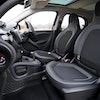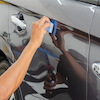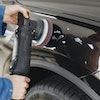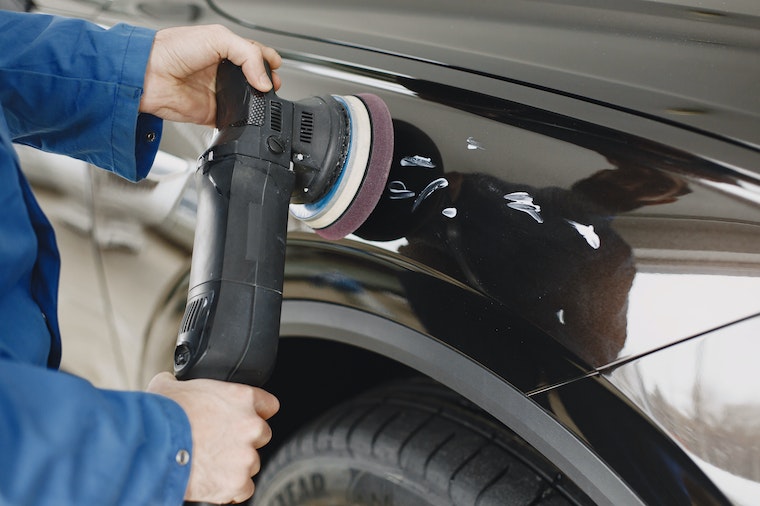Paint correction is the process of permanently removing surface scratches, swirl marks, hazing, marring, and other imperfections in your vehicle’s paint. It’s a powerful way to bring the color back to its original shine!
Vehicles these days often have a primer coat of paint, then a base coat, sometimes an additional metallic flake or pearl coat, and then a clear top coat. It’s that top coat that needs the most TLC. During the paint correction process, we’re shaving microns of thickness off that top clear coat, to make it as smooth as possible. In order to remove a scratch, the paint in the surrounding area needs to be removed until it’s level with the lowest point of the scratch. So in a way, you aren’t working on the scratch itself – you’re working on the area around it.
For some, this concept is terrifying. Yes, paint is being removed. But we’re doing so in very small, sometimes microscopic amounts. The average light scratch can be removed without taking more than a couple of microns of paint off. Deep scratches are a different story and will need to have the pros and cons weighed before deciding whether to remove them or not.
Does My Vehicle Need Paint Correction? How can I tell?
We tell our clients that almost any and every vehicle needs or can benefit from paint correction. How can you tell? Have you ever looked into your vehicles paint in the direct sun and it just doesn't seem to have the same deep luster that it once possessed? Do you look closely and notice that it looks like a spiderweb is covering the vehicle? These are scratches known as spiderwebs or swirls. After paint correction and with proper washing methods, swirls can be prevented by avoiding the old "wax-on, wax-off" mentality of washing and wiping in a circular motion. The correct method in washing is to imagine the vehicle in a wind tunnel; you want to wash a vehicle from top to bottom, using straight, linear motions in the direction air would flow over the vehicle. Although it is impossible to not place mild scratches from washing your vehicle over time, washing the proper way will drastically reduce or eliminate the chance of placing swirls back into the finish after paint correction.
What paint correction WON’T fix
Not every problem with your vehicle’s paint job can be fixed with a paint correction. It won’t fix dents or stone chips. It won’t change the color of your car’s body panels to fix paintwork that doesn’t match. Extremely deep scratches and gouges are outside the realm of what paint correction can do as well. All of those things are jobs for a body shop.
Wet Sanding
This is the most aggressive way to remove scratches and defects from your paint. Using sandpaper on your paint is not for inexperienced detailers. When in the wrong hands, wet sanding can cause excessive amounts of paint to be removed and in inconsistent patterns.
When do you wet sand a vehicle?
Typically, wet sanding is reserved for heavily damaged paint jobs. There are some cases where consistent, light wet sanding is LESS aggressive than hitting the area hard with a polisher for a long time. It allows you to work an area for a shorter amount of time and creates very little to no heat in comparison to machine polishing.
Typically, wet sanding is reserved for heavily damaged paint jobs. There are some cases where consistent, light wet sanding is LESS aggressive than hitting the area hard with a polisher for a long time. It allows you to work an area for a shorter amount of time and creates very little to no heat in comparison to machine polishing.






.png)